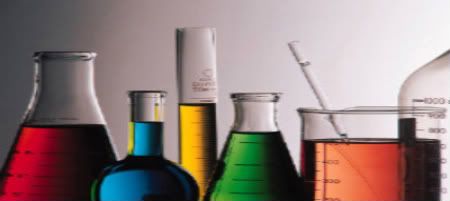
What is it?
Thursday, May 8, 2008

Using the Ideal Gas Law, estimate the reduction of pressure in this tire if there is a change of temperature from 20oC to -20oC. Assume the tire to be mounted on a car with an initial pressure of 32 psi (220640 pa or 4611 psf).
The Ideal Gas Law can be expressed as PV = NkT where P, V & T are the Pressure, Volume and Temperature, respectively and N is the number of molecules contained within the Volume V and k is a constant.
We have two situations, 1) when the temperature is 20oC and 2) when it is -20oC. For each of these situations the Ideal Gas Law applies and we can write
P1V1 = NkT1
P2V2 = NkT2
Let's assume the volume of the tire is not affected by the change of temperature. Since V1 = V2, then it follows that
NkT1/P1 = NkT2/P2
and after canceling Nk from both sides,then we have
T1/P1 = T2/P2
Or
P2 = P1T2/T1
Or
P2 = P1T2/T1
(It is also the Gay Lussac's Law)
Since we know both temperatures and the initial pressure we can solve this problem once we make some simple unit conversions.
When using the Ideal Gas Law we must convert the temperatures to Kelvin. Recall that
Tk = Tc + 273
then T1 = 20 + 273 = 293 K and T2 = -20 + 273 = 253 K.
Therefore T2/T1=1.16and P2 = 32 (1.16) = 37.1psi (255805pa or 5346psf)
You see that the reduction of pressure is significant. Low tire pressure will result in poor gas-mileage. In the case that you are traveling a long distance it is best to check your tire pressure, especially at the beginning of the winter months. The onset of warmer summer days will instead provoke a pressure increase。
When using the Ideal Gas Law we must convert the temperatures to Kelvin. Recall that
Tk = Tc + 273
then T1 = 20 + 273 = 293 K and T2 = -20 + 273 = 253 K.
Therefore T2/T1=1.16and P2 = 32 (1.16) = 37.1psi (255805pa or 5346psf)
You see that the reduction of pressure is significant. Low tire pressure will result in poor gas-mileage. In the case that you are traveling a long distance it is best to check your tire pressure, especially at the beginning of the winter months. The onset of warmer summer days will instead provoke a pressure increase。
CJC 1T21 Wei Feng
muststudy chem;
you will love it... 0 Comments
THE BLOGGER
Chem students
MY CITTER CHATTER
BYEBYE
Doc Brown's Chemistry Clinic
1T21 Class Blog
Organic Chem
Organic Chem---Isomers
Organic Chem---Isomers...Interesting problems with 3D animations.
ARCHIVES
July 2008
CREDITS
layout: ineedahugandoh;
brushes: ##